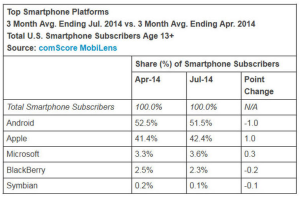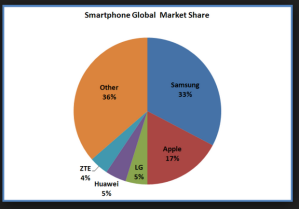 The other night I was asked by a colleague who had a question from a reporter at INC Magazine what are some success tips for entrepreneurs and additionally what are some tips when you run into trouble. I have written about tips for budding entrepreneurs in my blog on The Business of Business in the past and have written on behalf of the TechCoastAngels as well.
The other night I was asked by a colleague who had a question from a reporter at INC Magazine what are some success tips for entrepreneurs and additionally what are some tips when you run into trouble. I have written about tips for budding entrepreneurs in my blog on The Business of Business in the past and have written on behalf of the TechCoastAngels as well.
Serendipitously, the day after I wrote my comments to the reporter, I had the opportunity to listen to an interview by Andrew Bermudez of Digsy (www.getdigsy.com, www.meetup.com/OCfounders), of Dan Rodrigues, CEO and founder of Kareo (www.kareo.com). Dan’s company, Kareo, has raised more than $100 million and is the fastest and largest growing company in Orange County, CA. His company provides a cloud-based platform for independent medical practices and currently has more than 35000 providers served by more than 500 employees.
I want to share Dan’s perspective on how he grew his company and the road he had to travel. Let’s lay out the journey in three chapters: Genesis and Euphoria; Reality of Funding and Growth: and the Path to Success. And in each chapter there are lessons to be learned and tips for the entrepreneur.
Genesis and Euphoria
After Dan sold his first company, Scour, he started a software development consulting business. During this time, he worked on a project for a client in the healthcare space. Through this project, he learned about healthcare IT. Yet he also applied his knowledge of the consumer, gained from his stints at Vizeo and Real Networks, to the business. He took the knowledge and the project and built the beginnings of Kareo and the first customer was the company for whom the original project was designed.
Lessons learned:
- An inquisitive mind can yield interesting insights into new ideas. In this case, Dan used an inductive process to define the requirement to serve one customer and used that platform as a base of expansion to other similarly situated companies. Entrepreneurs can take a custom project and move it to a generalized solution which might give you an immediate customer base.
- Integrate different perspectives to develop your business. Dan leveraged his prior experience in a different market space and was able to apply that knowledge to make Kareo different than other software companies in the same space. In a later chapter, Dan directed Kareo to be an online provider of SaaS services to this market.
- Build relationships as they will be valuable for funding as well as support and resources. Dan was able to use past relationships built over time to get to VCs on Sand Hill Road and High Net Worth individuals to help provide the initial funding.
Reality of Funding and Growth
Initially, Dan bootstrapped Kareo and now with some funding and the opportunity to gain more, the business seemed off to a solid start. And while you might read about Dan’s story thinking that it was all wine and roses, the truth is that Dan had some tough days early on with Kareo. In 2008, Dan received a difficult call from an investor who was unable to deliver a promised next round of funding. With no time to find another investor and significant bills to pay, Dan made a very tough decision. He reduced the company from 35 employees to 7, and found a new path for Kareo. During the entire year after, Dan did not take a salary as CEO so that others could be paid. The goal was now survival and the focus was getting customers, reducing product expenditures, and finding more efficient ways to support existing customers to reduce cash burn.
Lessons Learned:
- Never take anything for granted. An investor can change his mind and funding may no longer a certainty. The business environment might change too and entrepreneurs need to be fast, fluid, and flexible.
- Spend wisely and carefully. Kareo built a company and moved into expensive office space. How many of the readers can relate to the euphoria of getting funded and spending lavishly with those funds? I know I have been in companies that did not spend wisely and had to retrench.
- Learn the way to manage the business in the most efficient manner.
- Develop good solid cash management and make that a core competency
- Build a support infrastructure in synch with the services your company provides and find ways, at least initially for minimizing spending on infrastructure. Try to build a solid online help solution, provide excellent documentation, a good knowledge base. But also have an additional second layer of support if needed. Train people to do double duty.
- Learn to sell online. Other software in the healthcare market was sold through VARS. Selling online gave Kareo an edge and reduced the cost of acquisition.
Path to Success
With revenue ramping to $3 million, and cash flow positive, Kareo was on the path to success. During this phase, the goal was to grow the business through disciplined growth using the lessons learned during the prior chapter. Over time, Kareo started adding back employees, expanding its product set, and increasing sales.
Lessons Learned:
- Maintain the discipline of cash management. Remember the lessons from when growth and cash flow were hard to come by.
- Define metrics for success. Share these metrics with your team and manage them religiously. Metrics used by Kareo included cost/customer, payback on margin, return on cost of customer acquisition, churn rate, and lifetime value of a customer. Note: these are very similar to other SaaS and technical service companies that use subscription services as their business model.
- Hire the right talent. It is difficult in some ways for a small company to recruit good technical talent in Orange County vs. in San Jose. There is frankly more talent there by virtue of the number of companies in the tech space. Don’t let that be a daunting task. Dan created a culture in Kareo and a solid reputation of being a progressive company which attracted talented individuals. On the flip side, retention might be easier in OC and probably is for Kareo given their culture, the fact that the smaller company can provide a solid platform for growth of its employees, and Dan’s vision and leadership style.
According to Dan, when the company had fewer than 50 people it was easy to attract a great talent pool because of the excitement. When the company had between 50-200 people, Kareo started to compete for talent as employees looked for other exciting opportunities or felt they had the ability to move out on their own. After growth to 200 employees, Kareo had established its reputation and talented individuals wanted to work there.
Lessons learned:
- Recruit a top level executive team. Building the team is critical to any company and is especially true for start-ups and growing companies. Some of the executives were recruited from outside of Orange County and complemented those from the OC.
- Find leaders who know others and can attract talent and capital. This makes it easier to sustain growth.
- Change the culture with changes in the business. Dan indicated that culture changes at different stages of growth. When you have between 1-10 people you are in survival mode. As his company grew, it felt more like a family. At a certain point as additional employees were on-boarded and new geographic locations were opened, the culture changed because not everyone knew each other nor worked with each other on continual basis.
- The company is a platform for growth for its employees. Reinforce and support educating employees, building their skills, and adding to an employee’s competencies. I know many executives who don’t want to invest in employees because they are fearful of losing them to competitors. I personally believe Dan’s approach is the better one and creates a culture and brand that ensures talent will stay with Kareo.
Dan was asked what he would do differently if he could do it over again. After reflecting Dan accepted that there were mistakes and missed opportunities. So let’s frame them.
Additional tips and lessons:
- Build a business first and a product second. This means don’t normally chase individual customer requests and spend money on unique features and services for different customers.
- You need to keep the lights on even if the product stands still for a while.
- Under invest in the product and invest in the business side. From my viewpoint, this is a difficult lesson for many engineer-founders. Therefore make sure you have a good solid business partner as the ying to your yang.
- Companies need to be agile and reorganize at transition points and at changing stages of growth.
- Companies need the right advisors and investors. While the CEO is focused on growth and getting the product into the market, advisors and investors have the opportunity to look forward and may see minefields ahead. The CEO needs to heed them.
On behalf of TechCoastAngels, Andrew Bermudez, and Dan Rodrigues, I trust you find this blog and its contents useful for entrepreneurs in their own quest for success. Please share and forward to others.
Let’s work together to build a strong entrepreneurial eco-system in Orange County. And if you want to talk further feel free to contact me at dfriedman@clevelpartners.net. Hope to see you at our March 10 event on celebrating entrepreneurship at the Segerstrom (www.techcoastangelscelebration.com.)






Recent Comments